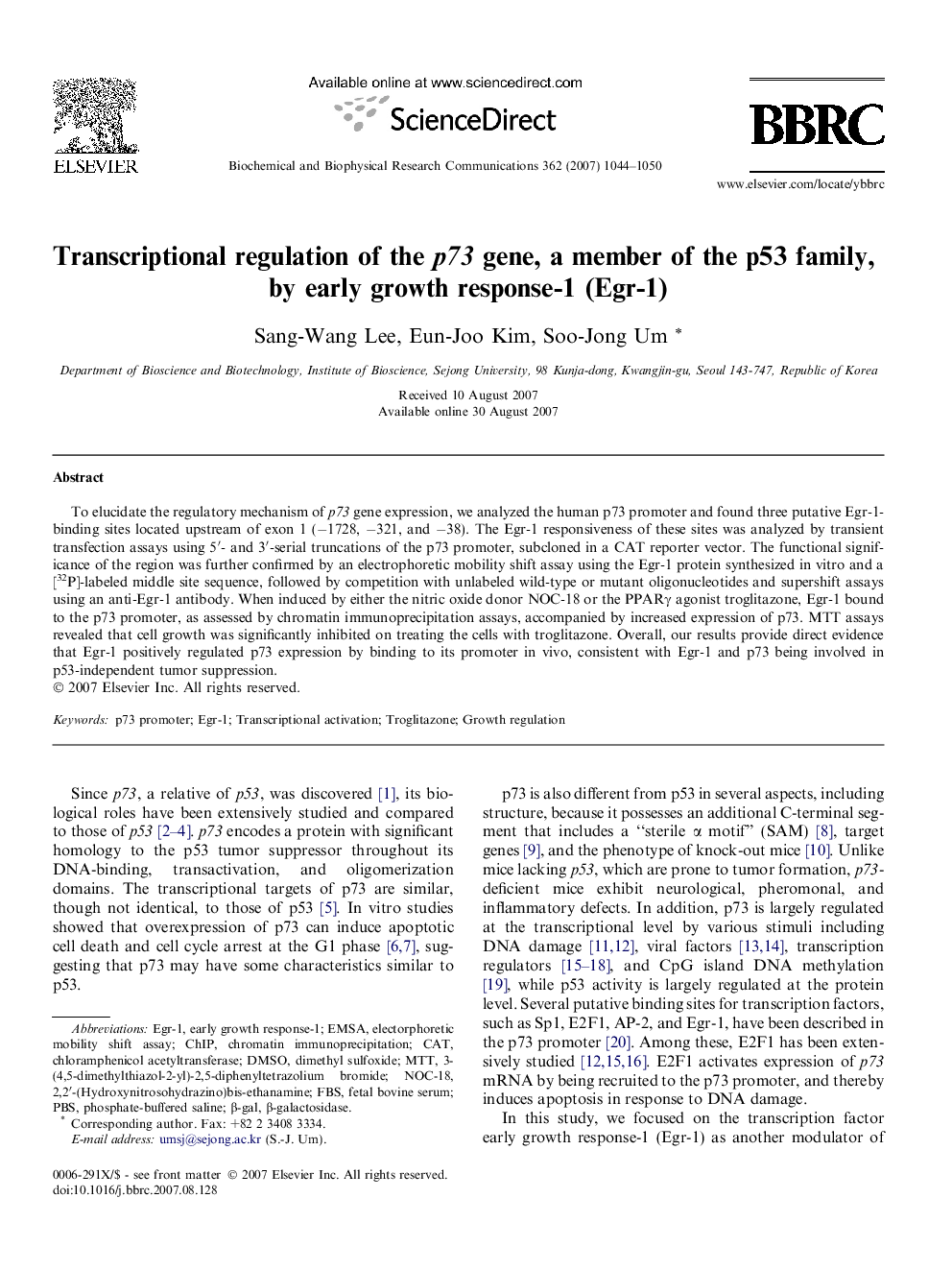| Article ID | Journal | Published Year | Pages | File Type |
|---|---|---|---|---|
| 1936366 | Biochemical and Biophysical Research Communications | 2007 | 7 Pages |
To elucidate the regulatory mechanism of p73 gene expression, we analyzed the human p73 promoter and found three putative Egr-1-binding sites located upstream of exon 1 (−1728, −321, and −38). The Egr-1 responsiveness of these sites was analyzed by transient transfection assays using 5′- and 3′-serial truncations of the p73 promoter, subcloned in a CAT reporter vector. The functional significance of the region was further confirmed by an electrophoretic mobility shift assay using the Egr-1 protein synthesized in vitro and a [32P]-labeled middle site sequence, followed by competition with unlabeled wild-type or mutant oligonucleotides and supershift assays using an anti-Egr-1 antibody. When induced by either the nitric oxide donor NOC-18 or the PPARγ agonist troglitazone, Egr-1 bound to the p73 promoter, as assessed by chromatin immunoprecipitation assays, accompanied by increased expression of p73. MTT assays revealed that cell growth was significantly inhibited on treating the cells with troglitazone. Overall, our results provide direct evidence that Egr-1 positively regulated p73 expression by binding to its promoter in vivo, consistent with Egr-1 and p73 being involved in p53-independent tumor suppression.
